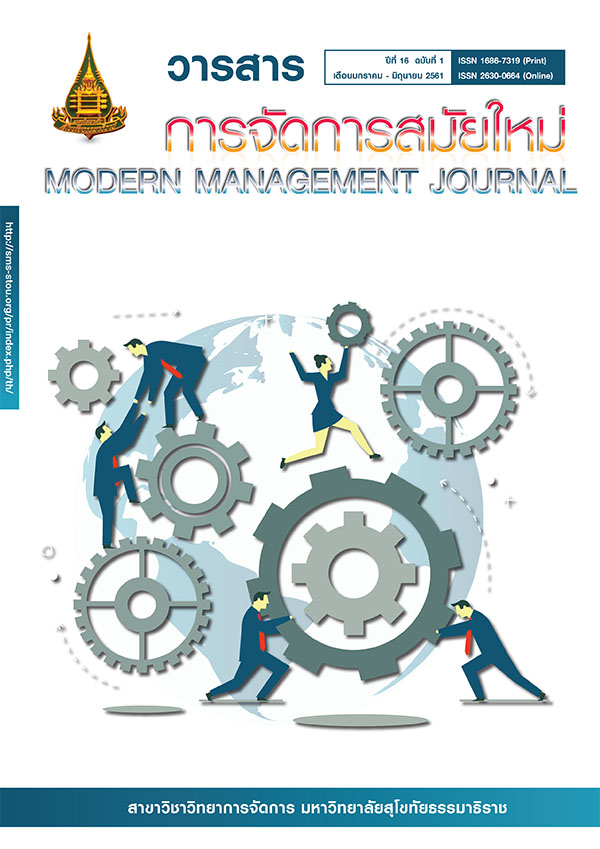THE SYNTHESIS OF MANAGERIAL MODEL FOR AUTONOMOUS PUBLIC ORGANIZATIONS IN THAILAND
Keywords:
Autonomous Public Organizations, Managerial Model, Synthesis, Dialectic MethodAbstract
The purpose of this research aims to; 1) study the basic information and the requirement managerial model for autonomous public organizations in Thailand; 2) synthesize a managerial model for autonomous public organizations in Thailand; and 3) study the suggestion in respect of public policies to adopt for the development and improvement of autonomous organization management in Thailand in the future by using qualitative research having sample people and group i.e. professional, lecturer or specialist in the autonomous public organization and the public organization representative in the amount of 38 persons who come from the public organization in the whole kingdom which were established according to the Royal Degree and proceed to collect information by in depth interview, in practical meeting and seminar by using the dialectic method. The result of this research were found that 1) the public organizations in Thailand has adopted models of public organization in France and models of the United Kingdom in the initial period. Later, the public organizations in Thailand had adopted the public organizations concept in Europe. In respect of the requirement of model of public organizations incurred since the government had an increased new mission relating to public service. These missions needed to have its flexibilities in the management and the independent management’s consideration. 2) From synthesizing the said models, the group of autonomous public organization should be divided by using the main mission of autonomous public organization i.e. Group A, a autonomous public organization which had a mission of rendering a public service; Group B, a autonomous public organization which had a mission and specific duration; and Group C, a autonomous public organization which had a mission for responding government policies. In respect of the management structuring, this research was found that some certain legal issues in respect of the management structuring should be amended by imposing the committee of development and support public organization (“Super Board”) which consist of representatives from the management and representative of public organization’s staffs, including setting up a recruitment method for the Committee of public organization management and a Director of autonomous public organization who had a high and performed qualification without any political intervention.The human resource management and the budgetary management of autonomous public organization should be independent in management and should have its own rule and regulation without over applying rules and regulations of the public sector. For regulating and auditing of autonomous public organization, it should be performed as appropriate. 3) In respect of the presentation of the policy proposal, government should issue precise and clear policies toward the autonomous public organization to allow the organizations to work toward their missions and objectives in the restrict time frame. Therefore, these policies would allow the organization to function and support them to develop their human resource as it should be. Furthermore, the standardization should be set and benchmark against other organizations to improve the competition and development. Finally, the government should promote the cooperation among the autonomous public organizations to support their operation



